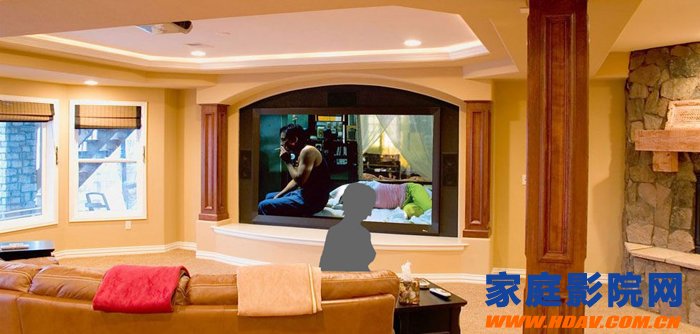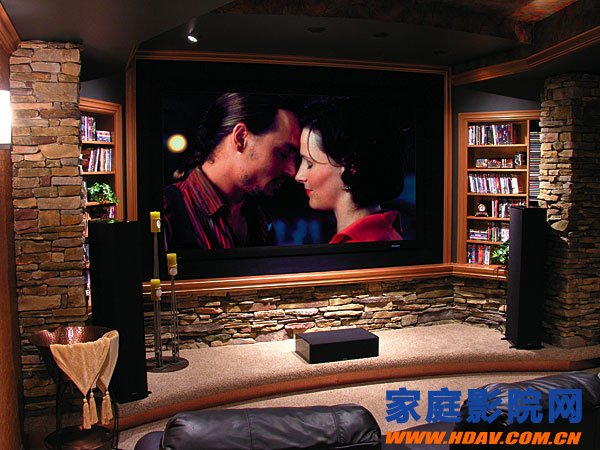[Home Theater Network HDAV.com.cn] 1. There is no technical content in the home theater In the mid-1990s, with the emergence and popularity of LD and VCD, the Dolby Surround Home Theater System began to enter the homes of ordinary people, and consumers began to watch the Shenying program at home. Due to China’s control over the source of imported programs, the proliferation of pirated DVDs and the soaring of movie tickets (the price of Shanghai’s movie has surpassed that of New York), many consumers who used to visit cinemas have turned to DVD movies at home. . At the same time, due to the rapid development of electronic technology, the cost of products has been declining, and the penetration rate of home theater products has also increased year by year. Therefore, "home theater" is no longer a mysterious, fresh concept, and consumers do not feel how high the technology content of home theater. In the eyes of many people, home theater is nothing more than installing a set of equipment at home and watching movies. Some consumers even think that home theater is a very low-end product. But in fact? Is the technical content of home theater really so low? Let’s first take a look at the English translation of the “home theater†by Wikipedia, the Internet professional vocabulary: Cinemas and movie studios are built according to the IS02696/SMPTE202M standard clips. Therefore, if you want to achieve the same sound and picture effects in the cinema at home, then the technical specifications of the home theater must also meet this standard. Therefore, although many home theater systems are installed in many homes, some are valuable, but due to the lack of professional sound insulation and noise reduction processing, room acoustic processing and system debugging, the effect is still very large compared with professional standards. gap. In the United States, a home theater that conforms to the ISO2696/SMPTE202M standard typically costs more than $400,000, of which 7c% is spent on design and installation, while product equipment is a small fraction. On the contrary, in China, this ratio is completely reversed. More than 80% of the entire budget is used to purchase advanced audio-visual equipment. The cost of acoustic design and system integration/installation is very small. The final result is of course Not satisfactory. A set of hundreds of thousands of home theater systems, sounds often do not differ much from the system of tens of thousands of dollars. Mr. Anthony Grimani emphasized that the room is the main factor affecting the sound and picture effect. Only when the room is "neutral", you can enjoy the original audio and video effects created by the sound engineer, and a mishandled room is like A powerful additive that makes the original effect unrecognizable. It takes 2-3 days for Anthony Grimanl to debug a home theater system for customers. In the meantime, more than 200 projects need to be tested to ensure the best audio and video effects, and the test reports that customers finally get are often as thick as dozens of pages. Therefore, home theater is not without technical content. On the contrary, its technical content is far beyond the imagination of the vast number of consumers. Mr. Anthony Grimani's average design cost is $70,000 to $80,000. Of course, such a high cost is not affordable for the average consumer. 2. THX home theater can be formed using THX certified products Many years ago, Star Wars director Joey Lucas went to a movie theater near his home to watch Star Wars, but the cinema’s sound and picture effects made him very disappointed, and he was in the movie studio. The effects heard and seen are very different. So he hired Tomlinson Holman, a professor at the US Southern California (USC), to design a certification program to improve the quality of cinema sounds. This is the origin of THX Venue Certification. There are currently more than 1,600 THX-certified film screening halls worldwide, two-thirds of which are in the United States. There are also more and more shadow screening rooms in China and India that have obtained THX certification. In addition to the cinema, THX also certifies film studios and professional multi-channel studios, and the latter is called pm3. There are currently more than 300 pm3 certified professional multi-channel studios in the world, and more than 30 of them specialize in audio production of video games. Final Fantasy, which is familiar to many game fans, from Final Fantasy VII on the PS platform to Final Fantasy XII on the latest PS2 platform, including the CG movie "Final Fantasy: The Fall of the Son" released last year. All are made in a pm3 certified multi-channel studio. Consumers who frequently visit the AV market may find that many THX-certified dealers prefer to hang a THX logo on their own at the door of the audio-visual room. This is a typical practice of misusing the THX logo. The use of THX-certified amplifiers, speakers, and projectors in the AV room does not mean that the sound and picture effects of this room have been THX certified. In fact, THX has not launched a room certification program for the home environment. In the United States, some wealthy private users can hire THX's professional technicians to help design a private theater that meets the THX movie studio standards. After passing the technical appraisal, the private theater can hang the THX logo. Therefore, the THX-certified home theater must be qualified by THX's technical staff before it can be called a THX-certified home theater, and the technical appraisal consultant fees generally range from $15,000 to $40,000. Due to the high technical requirements, even professional audio and video personnel who have passed the THX Level 4 certification are currently not authorized by THX to build THX-certified home theaters. THX Training Director John Dahl pointed out that designing and building a home theater that meets THX professional standards is much more difficult than building a movie theater. THX standard cinemas generally have the same size, seating position and equipment, etc. The construction process is basically a building block type. There are many limitations in the home environment, such as room size, room shape, air conditioning system, and worker's taste. These limitations increase the technical difficulty of design and installation. 3. THX sound is better than Dobly and DTS This is another very typical misunderstanding. THX works in conjunction with Dolby and DTS. THX does not have any codec technology. As can be seen from the working diagram of the decoder below, the digital audio signal sent from the signal source to the decoder is first decoded by the Dolby/DTS decoding circuit (red box) and then fed to the THX audio post-processing circuit (blue Color box), each THX function module in the post-processing circuit can make the sound effect reduction effect closer to the cinema and movie studio. In general, the THX-certified combined amplifier/pre-decoder product makes it easier to achieve sound effects close to the cinema, and its quality and work stability are better than those that are not THX-certified. 4. The most important channel of the home theater system is the left and right channels. Some audio distributors often choose the right and left speakers when they choose their home theater products, and then configure the relatively cheap mid-range or surround speakers. In the eyes of many traditional audio distributors, the left and right speakers are the most important, and the center and surround only play a supporting role. Admittedly, for 90% of the time to enjoy stereo music, the above combination is reasonable, but for customers who often watch movies, such a match is very unreasonable. In multi-channel movie soundtracks, the amount of information in the center channel is the largest, the average level is higher than the left and right channels, and the amount of information in the surround channels is the smallest. The effect of the center Speaker will directly affect the effect of the entire home theater. In the training, John Dahl pointed out that the center channel is the most important channel in the home theater. Therefore, when building a home theater, it is best to use three identical speakers as front speakers to ensure the best front image and smoothest sound field transition. Some THX-certified center-mounted speakers are designed to be horizontally placed, unlike left and right speakers, but this center-mounted speaker is rigorously tested by THX and is perfectly matched to the left and right speakers. In addition, some people deliberately configured stereo amplifiers for the left and right speakers. When watching movies, stereo amplifiers push left and right speakers, AV amplifiers push center and surround channels. Such a match will result in a serious mismatch of the tone matching of the left center and right channels, destroying the connection of the front sound field. More fresh and fun home theater information, please pay attention to home theater network http:// (WeChat: cnhifi), the country's most influential home theater audio player interactive media website. Note: This article is transferred from love video. The article is an independent view of the author and does not represent the position of the home theater network. Our comprehensive line of magnetic buzzers and Piezo buzzers are used across many major industries as a means for audible identification or alert. From extremely compact 4 mm SMT buzzers to larger, high decibel models, this product family of audio indicators, audio transducers, piezo elements, and sirens is well suited to address the requirements of the most challenging applications. Backed by a suite of online tools, accessibility to stock, and a range of customization capabilities, you can trust your unique audio alert needs with us. Door Buzzer,Buzzer Alarm,Electric Buzzer,Buzzer Button NINGBO SANCO ELECTRONICS CO., LTD. , https://www.sancobuzzer.com

